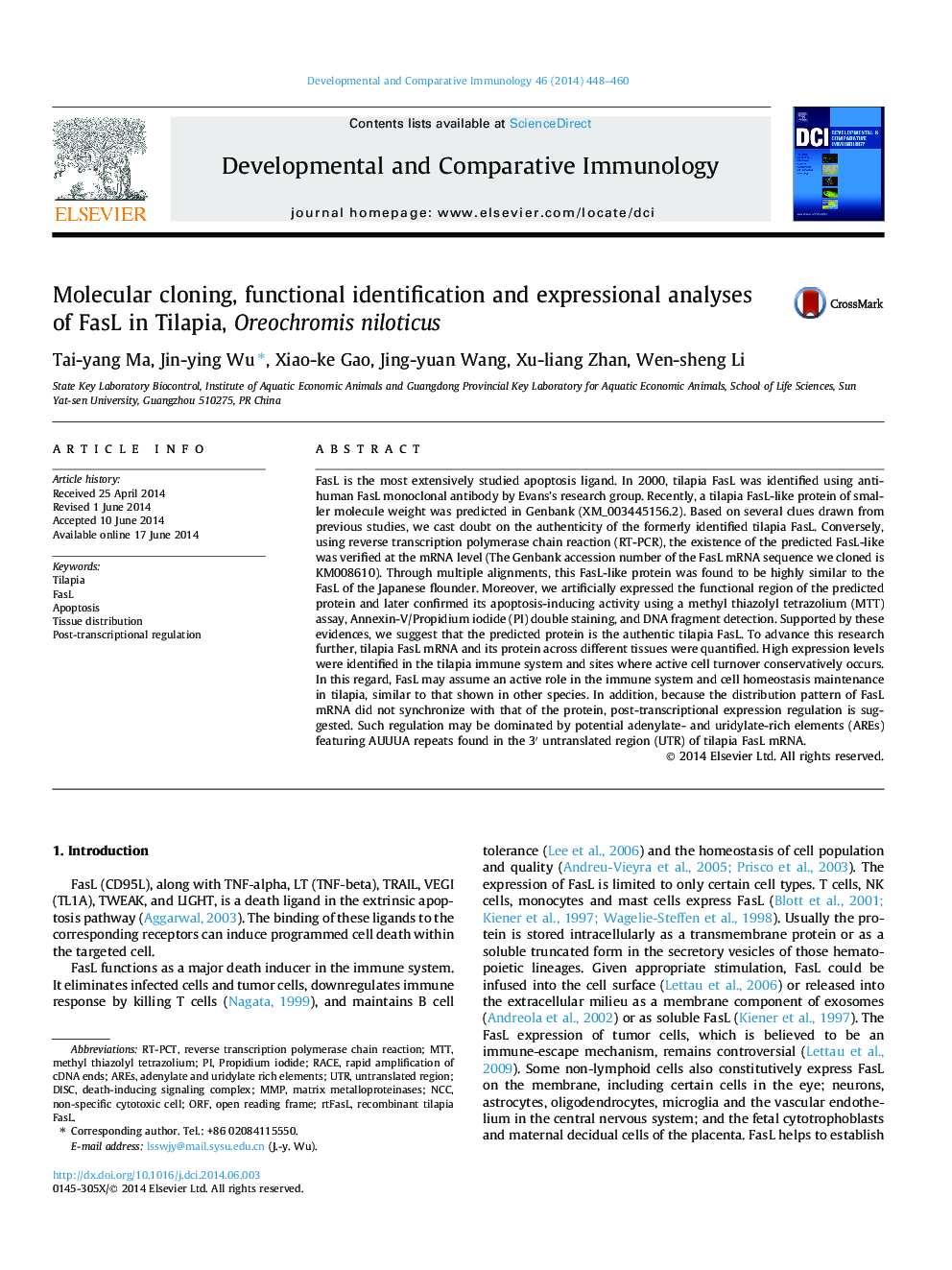| Article ID | Journal | Published Year | Pages | File Type |
|---|---|---|---|---|
| 2429160 | Developmental & Comparative Immunology | 2014 | 13 Pages |
•We cloned the cDNA of tilapia FasL.•The cloned FasL codes a protein different from the one previously identified.•Recombinant tilapia FasL induced the apoptosis of Hela cells sensitized by cycloheximide.•FasL is highly expressed in tilapia immune tissues, and sites where cells renew actively.•Post-transcriptional regulation may control the expression of tilapia FasL.
FasL is the most extensively studied apoptosis ligand. In 2000, tilapia FasL was identified using anti-human FasL monoclonal antibody by Evans’s research group. Recently, a tilapia FasL-like protein of smaller molecule weight was predicted in Genbank (XM_003445156.2). Based on several clues drawn from previous studies, we cast doubt on the authenticity of the formerly identified tilapia FasL. Conversely, using reverse transcription polymerase chain reaction (RT-PCR), the existence of the predicted FasL-like was verified at the mRNA level (The Genbank accession number of the FasL mRNA sequence we cloned is KM008610). Through multiple alignments, this FasL-like protein was found to be highly similar to the FasL of the Japanese flounder. Moreover, we artificially expressed the functional region of the predicted protein and later confirmed its apoptosis-inducing activity using a methyl thiazolyl tetrazolium (MTT) assay, Annexin-V/Propidium iodide (PI) double staining, and DNA fragment detection. Supported by these evidences, we suggest that the predicted protein is the authentic tilapia FasL. To advance this research further, tilapia FasL mRNA and its protein across different tissues were quantified. High expression levels were identified in the tilapia immune system and sites where active cell turnover conservatively occurs. In this regard, FasL may assume an active role in the immune system and cell homeostasis maintenance in tilapia, similar to that shown in other species. In addition, because the distribution pattern of FasL mRNA did not synchronize with that of the protein, post-transcriptional expression regulation is suggested. Such regulation may be dominated by potential adenylate- and uridylate-rich elements (AREs) featuring AUUUA repeats found in the 3′ untranslated region (UTR) of tilapia FasL mRNA.
